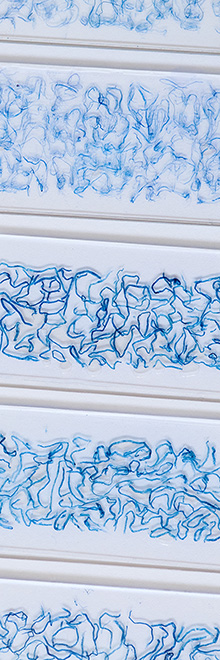Arbuscular mycorrhiza
Arbuscular mycorrhiza (AM) formed by obligately symbiotic fungi from the division Glomeromycota represents the most frequent and ubiquitous type of mycorrhizal symbiosis that inhabits the roots of more that 80 % plant species. Spectrum of their host plants ranges from bryophytes and pteridophytes to gymnosperms and angiosperms.
In contrast to ectomycorrhizal fungi, AM presence in soil or plant roots cannot be normally recognised with the naked eye, but only under a microscope. Arbuscular mycorrhizal fungi penetrate, again contrary to ectomycorrhiza, into cortical cells of the host where typical structures are formed - arbuscules and vesicles. Because of the presence of those characteristic structures in root cells, this type of endomycorrhiza was formerly called "vesicular-arbuscular", however, this term was dropped recently since some AM fungi do not form vesicles at all.
Short-life arbuscules with their main trunk and fine branches resembling small trees serve as a site of the intensive nutrient exchange between plant and fungus. In contrast, vesicles, i.e. globose or oval swellings formed terminally or intercalarly on intraradical hyphae, have a storage function.
Besides intraradical structures, AM fungi form also an extensive network of extraradical mycelium in soil that extends into bulk soil beyond the rhizosphere and enables the host plant to absorb nutrients, particularly relatively immobile phosphorus, from a considerably larger volume of the soil. By the differentiation of vegetative hyphae, AM reproductive structures - spores of different size, texture and colour (depending on the species) are formed asexually on extraradical mycelium in soil.

